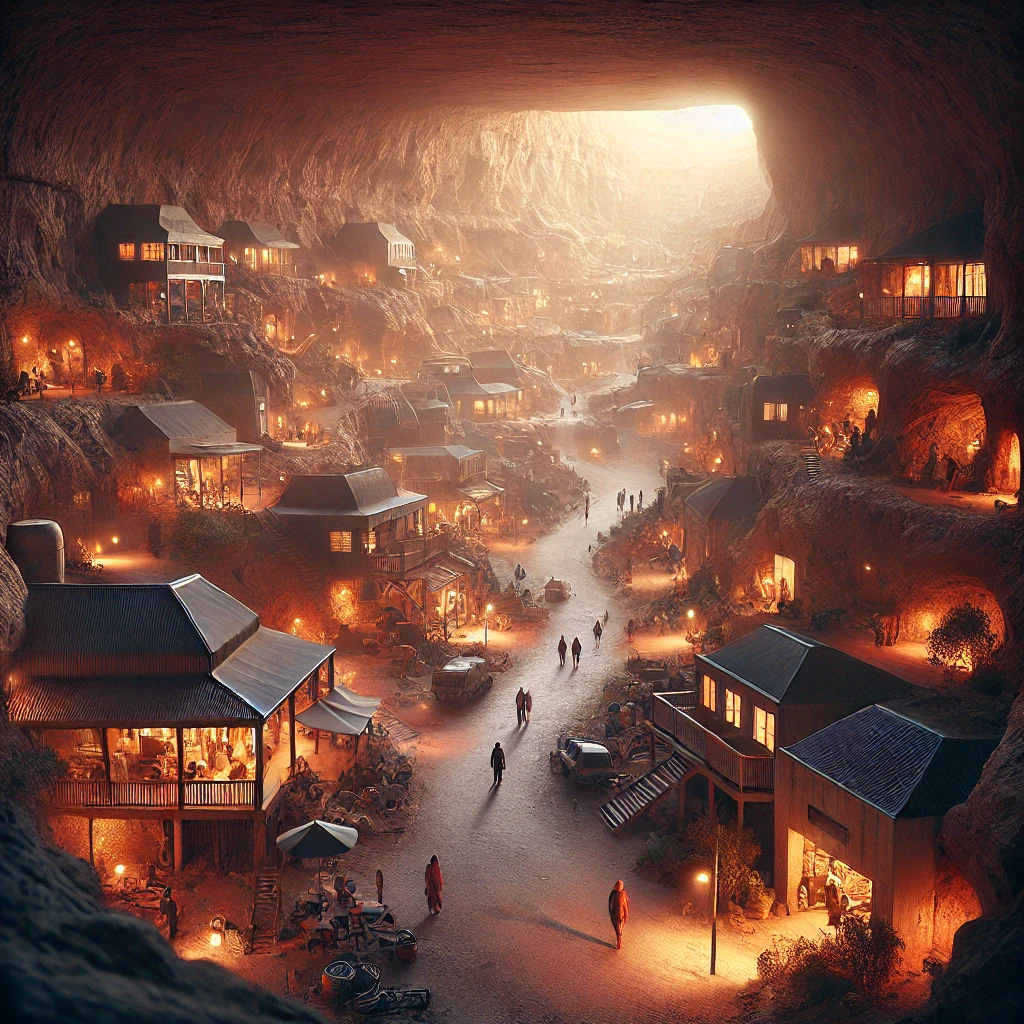
The Hidden World Beneath Australia’s Arid Landscape
Australia’s vast deserts hide more than just sand and extreme heat—beneath the surface lie entire underground cities. Built for survival, mining, and even luxury, these hidden communities provide shelter from the harsh climate while offering a glimpse into an extraordinary way of life.
Coober Pedy: The Opal Mining Town Beneath the Earth
One of the most famous underground towns in the world, Coober Pedy in South Australia, was established by opal miners in the early 1900s. Due to the unbearable desert heat, residents began building homes, churches, and even hotels underground. Today, over half of the town’s population still lives in these cool, subterranean dwellings.
The Origin of Underground Living in the Outback
The idea of underground cities in Australia dates back to Indigenous Australians, who sought shelter in caves and rock formations. Later, European settlers and miners adopted similar methods, digging into the earth to escape the extreme temperatures of the Outback.
Why People Choose to Live Underground
While the primary reason for underground living is to avoid the heat, other factors also play a role. The temperature below the surface remains stable year-round, reducing the need for air conditioning. Underground homes also provide excellent insulation, protection from storms, and an escape from the noise of modern life.
The Unexpected Luxury of Underground Hotels and Resorts
What was once a necessity for miners has now become a tourist attraction. Visitors to Coober Pedy can stay in luxurious underground hotels with fully furnished rooms, modern amenities, and naturally cool interiors. Some even offer underground dining experiences, giving tourists a taste of life beneath the surface.
White Cliffs: Australia’s Lesser-Known Underground Town
While Coober Pedy is the most famous underground settlement, White Cliffs in New South Wales is another example of subterranean living. This opal mining town features dugout homes, underground art galleries, and a unique lifestyle embraced by its small but passionate community.
The Underground Churches of Australia
Among the most fascinating underground structures in Australia are the churches. Coober Pedy’s Serbian Orthodox Church, carved entirely from rock, is a breathtaking example of religious architecture adapted to extreme environments. These places of worship provide a sense of community and tradition for underground residents.
How These Communities Are Expanding Underground
As mining operations continue and tourism increases, some underground towns are expanding their infrastructure. New homes, shops, and even schools are being built beneath the desert surface, proving that underground living is not just a relic of the past but a sustainable way of life for the future.
The Future of Underground Cities in Australia
With climate change causing rising temperatures, underground cities may become even more relevant. Scientists and urban planners are exploring the potential of subterranean living as a solution for extreme environments. Australia’s underground towns could serve as models for future eco-friendly and temperature-controlled settlements worldwide.
What These Hidden Cities Reveal About Human Adaptability
Australia’s underground cities stand as a testament to human ingenuity and resilience. Faced with an inhospitable landscape, people have found creative ways to thrive beneath the surface. Whether for survival, mining, or tourism, these underground communities continue to fascinate visitors and researchers alike, offering a glimpse into an alternative way of life beneath the desert sands.